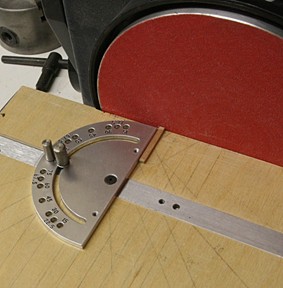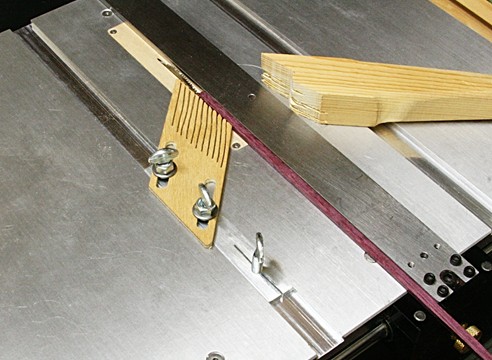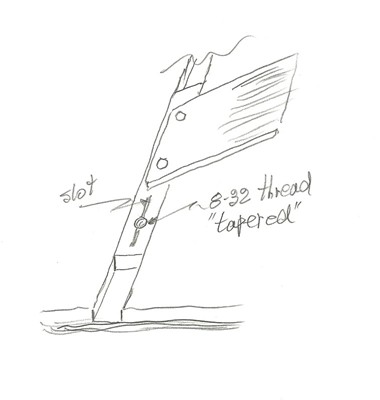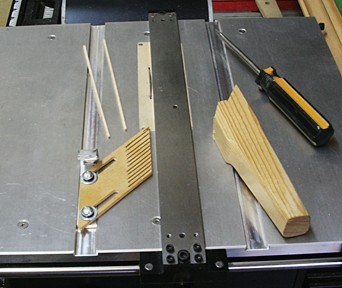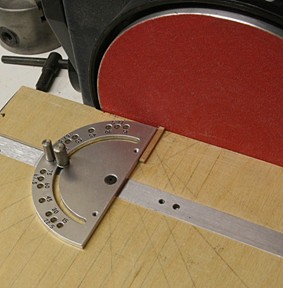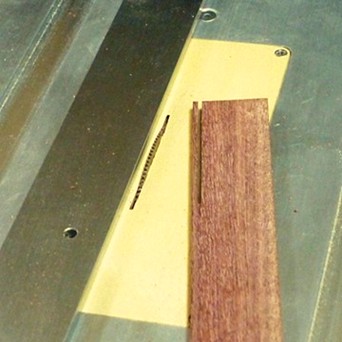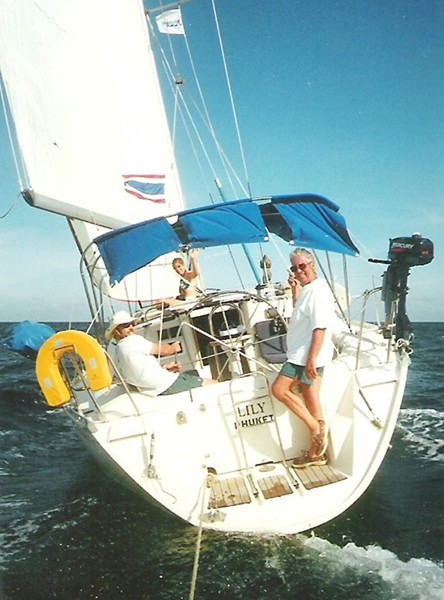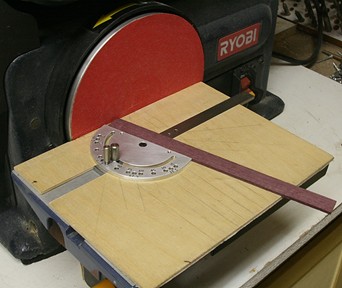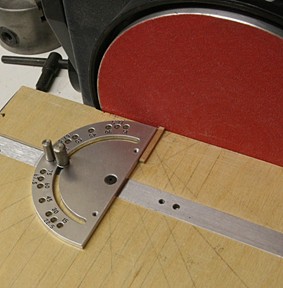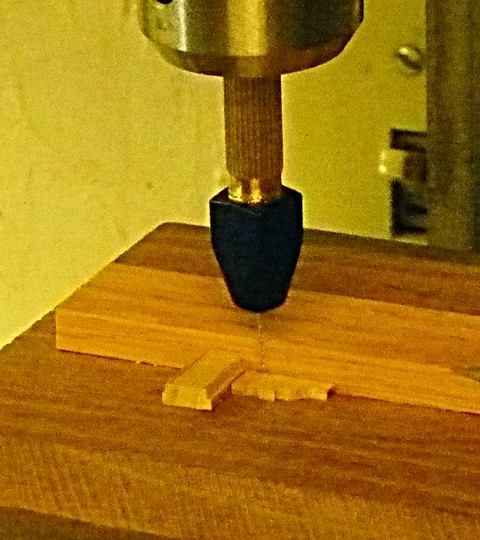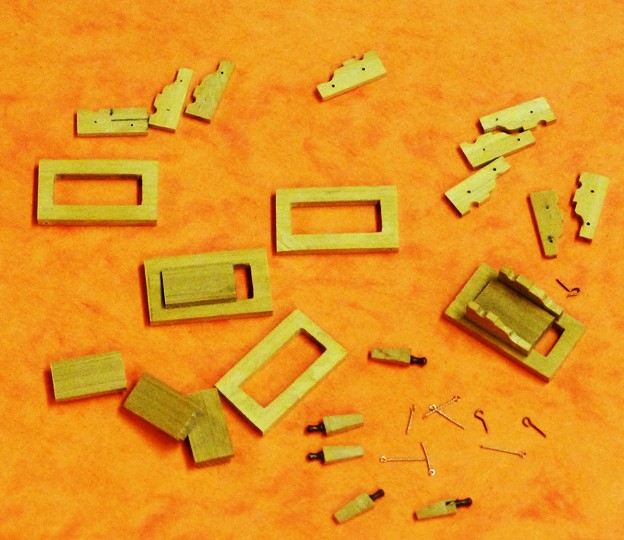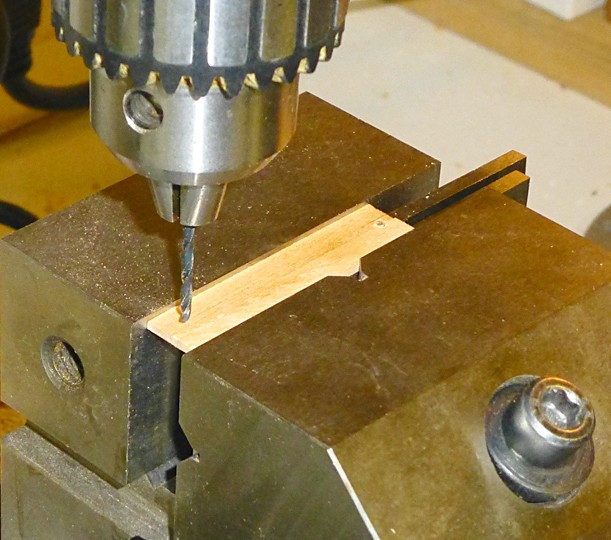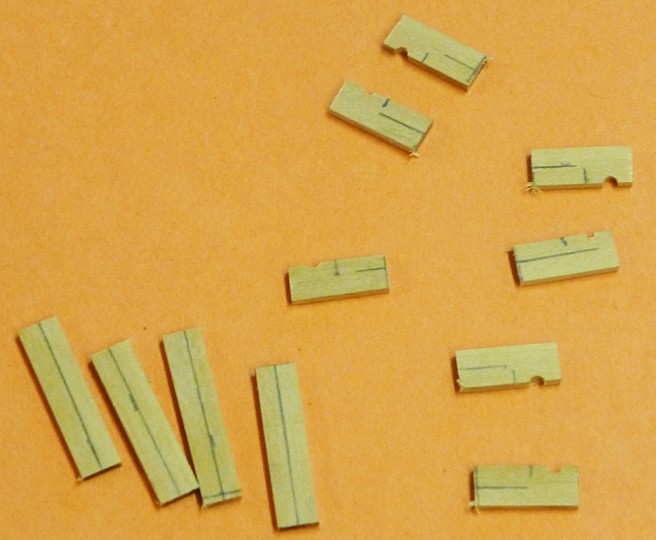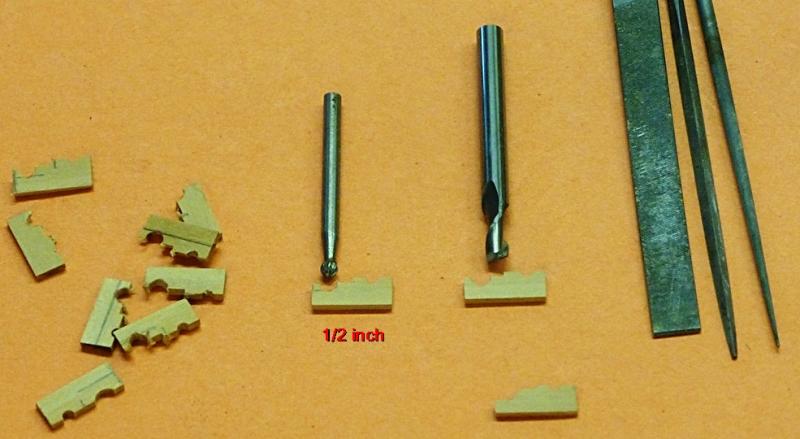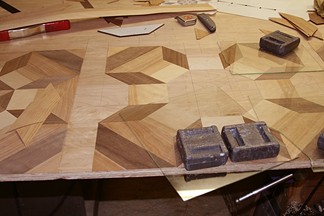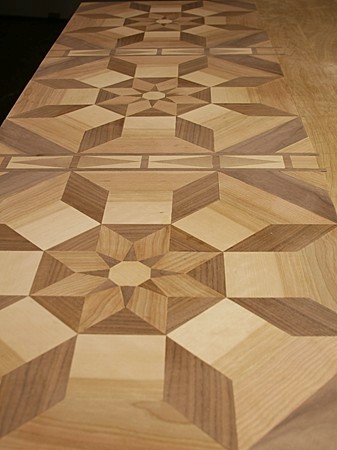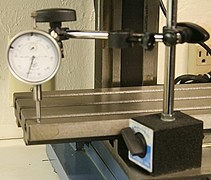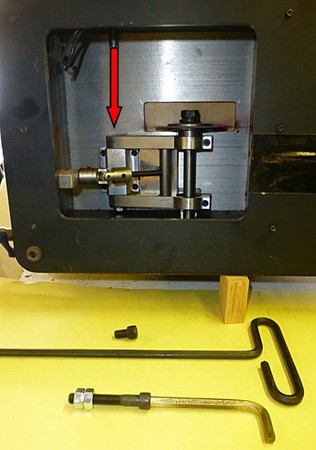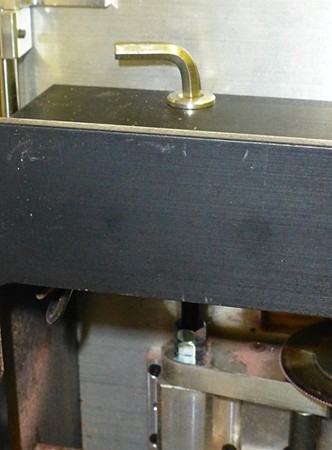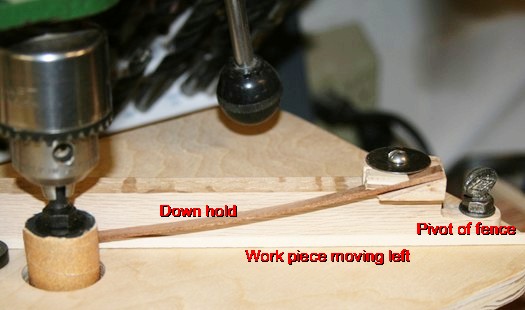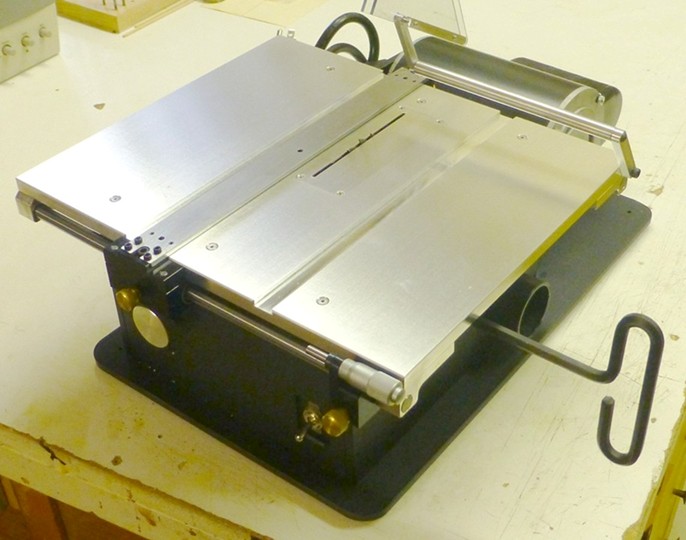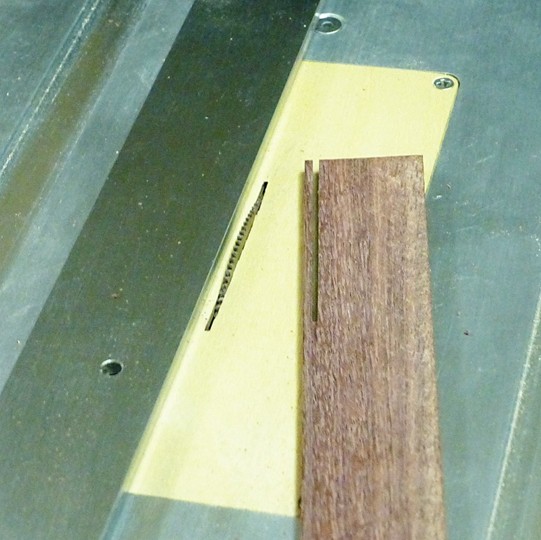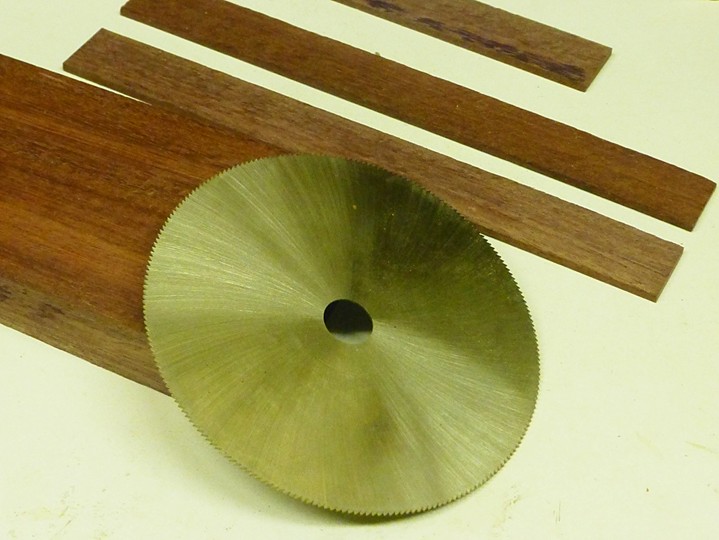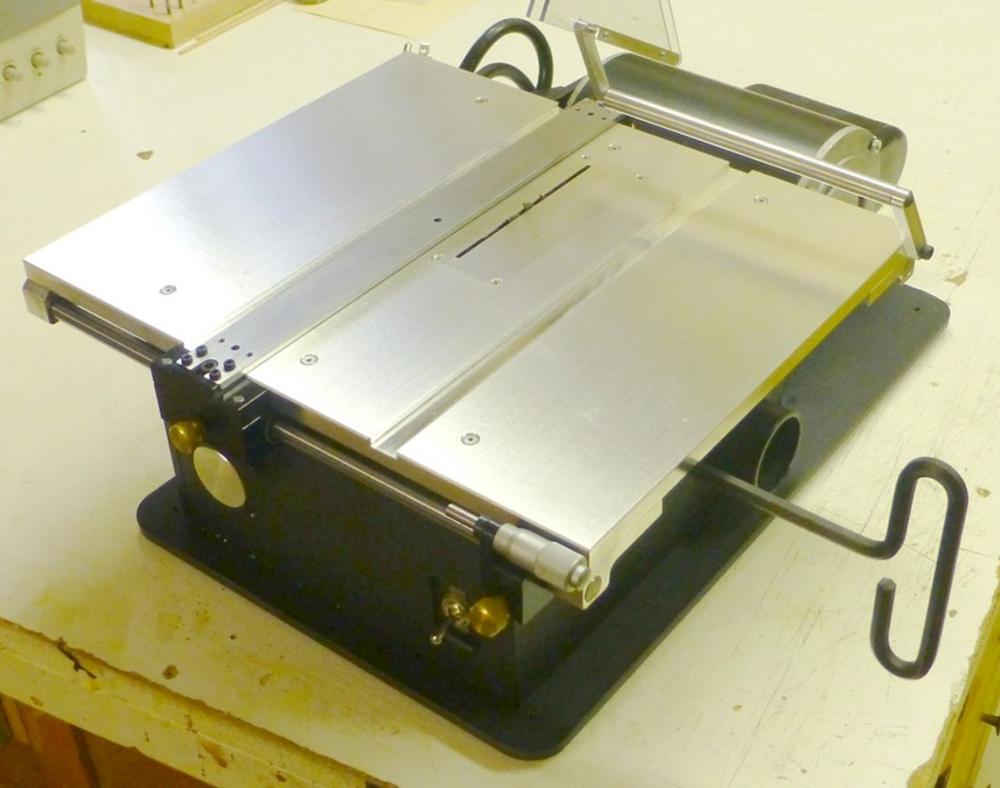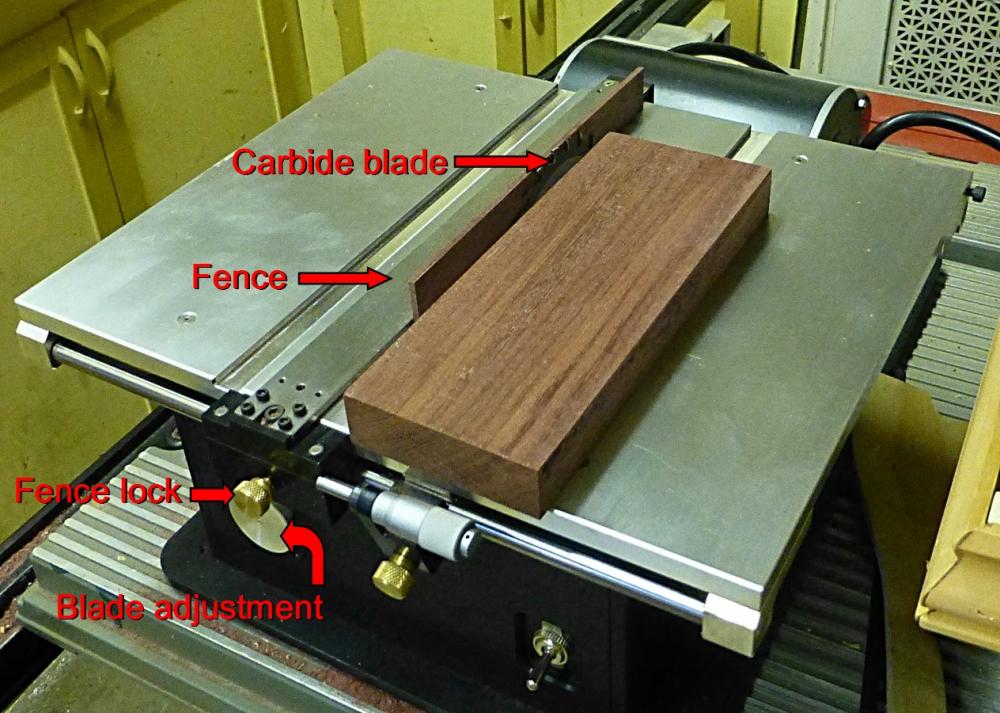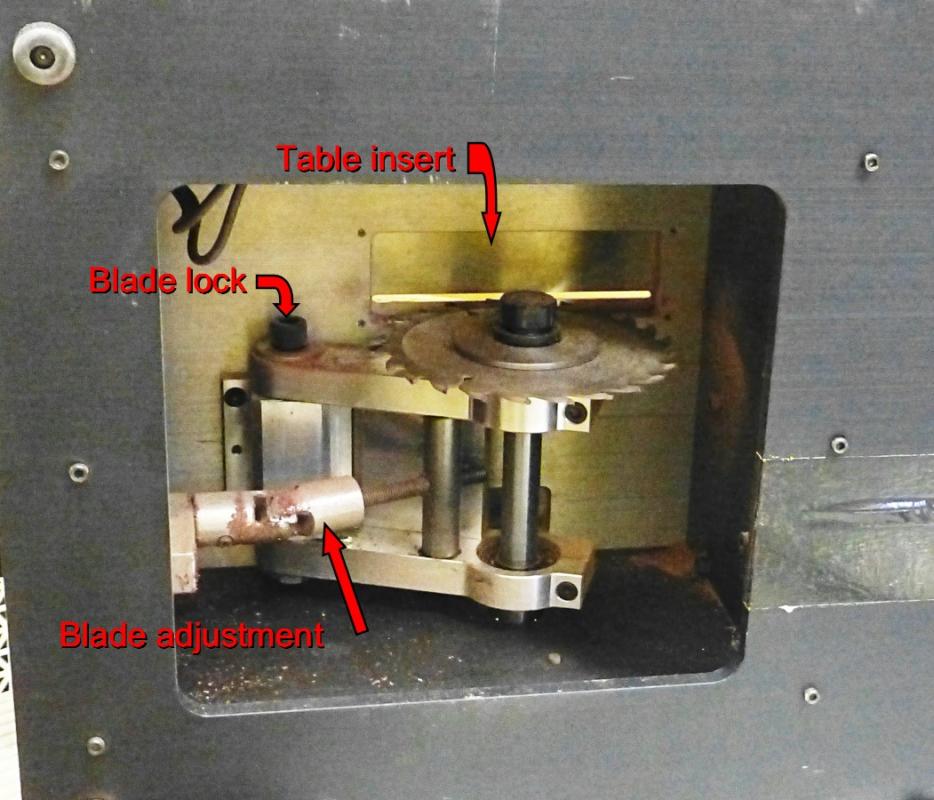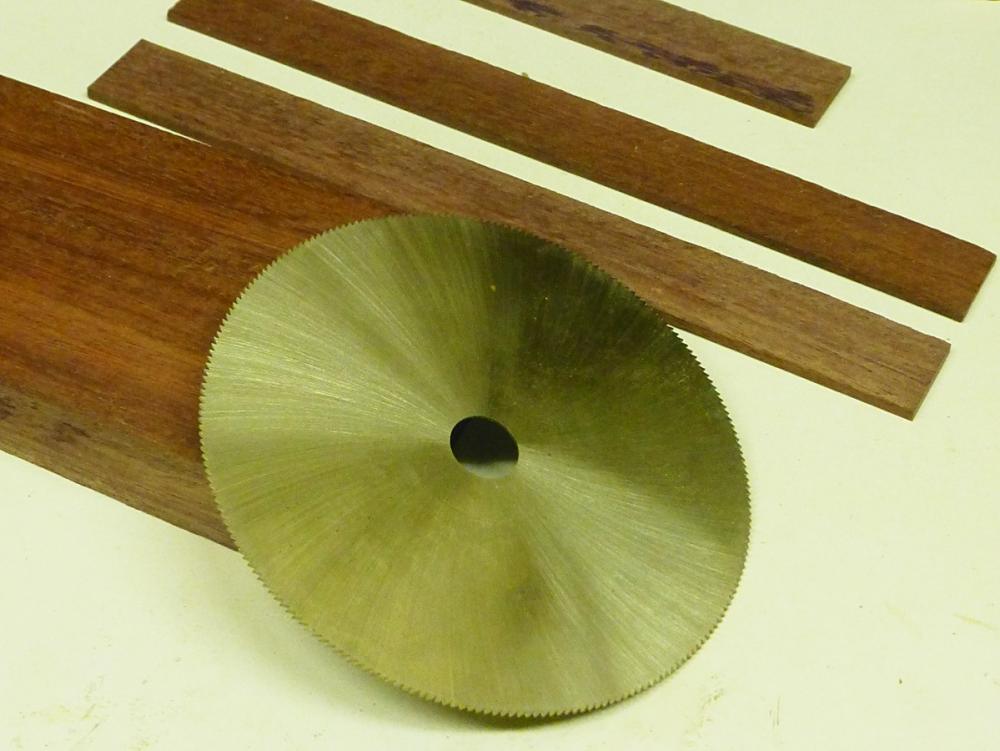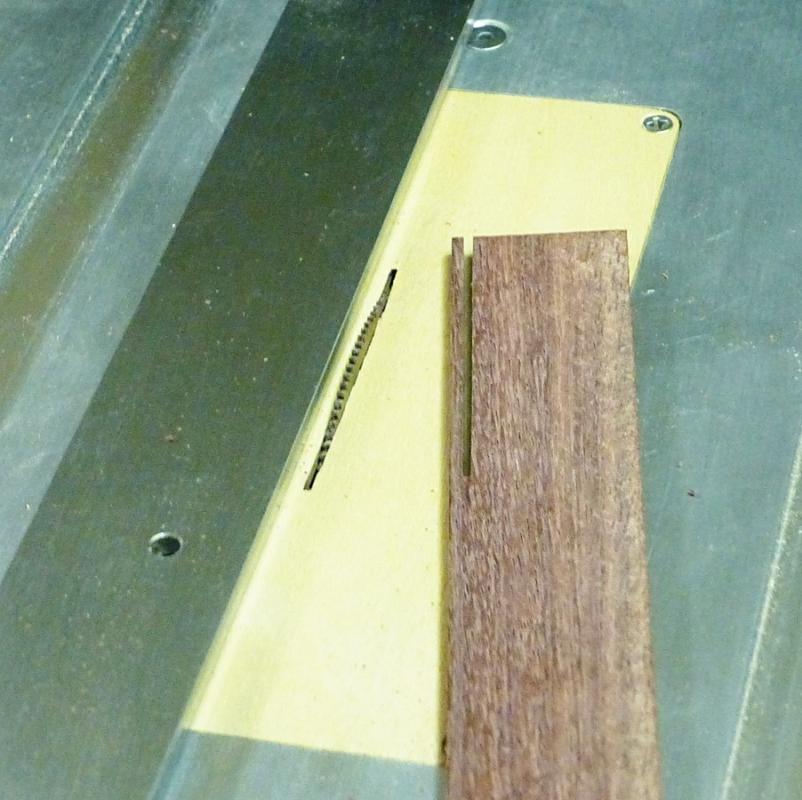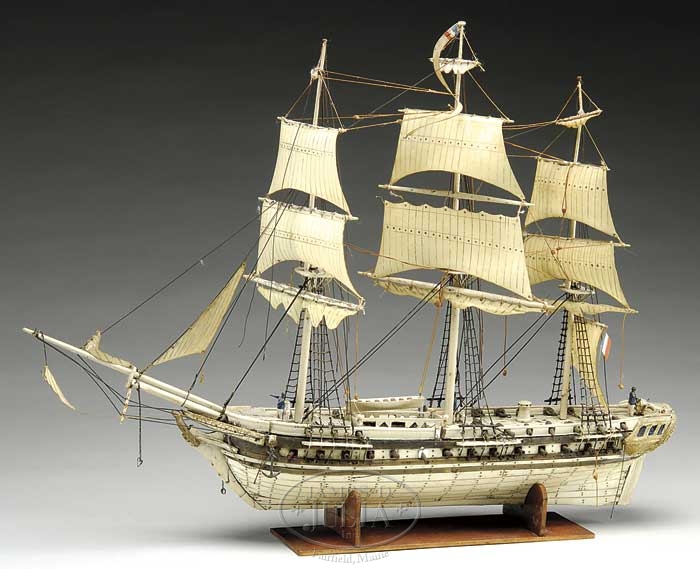-
Posts
1,716 -
Joined
-
Last visited
Content Type
Profiles
Forums
Gallery
Events
Everything posted by Modeler12
-
I am sorry, but I rather have the dull look. It is less glare in my face In fact I have adapted it to my Ryobi sander and it works great there also. That is a piece of 1/8 inch plywood on the table to give me zero clearance. But that is not all. I now have several featherboards that use a 1/2 x 1/8 inch aluminum bar and three 10-32 thumb screws. The one to the right is mounted in a 'tapered' threaded hole. As I tighten that screw it forces the bar against the sides of the slot to lock it in place. The featherboards are made of 1/8 inch plywood. I have used this for cutting narrow strips (not too cool when using your fingers). True, I have to readjust the featherboard as I progress cutting more strips from the same piece. But, se la guerre. BTW magnetic featherboards don't work on aluminum tables, so the only practical way is to use the slots.
- 11 replies
-
- miniature table saw
- Byrnes model machines
- (and 2 more)
-
Although the feather-board worked well, the bar did slip a bit too easily in the slot. I may have to modify this by making a longer bar with a slot and 'tapered' threaded hole as shown below. An 8-32 set-screw or even a thumbscrew would force the slot to open and push the bar against the sides of the slot. To make it easier, the slot could go all the way to the front end. This is not a new idea because I used it many times on the old Shopsmith.
- 572 replies
-
- constitution
- frigate
-
(and 1 more)
Tagged with:
-
Here is another addition to my Byrnes saw. Feather-boards. When the wood is wide enough, I use my left hand to guide the wood against the fence. But when it becomes very narrow, I have used a piece of wood to guide it, but the feather-board does a better job. Of course, I need to change the setting for different widths, but so be it. I use 1/8 plywood and cut the slots on my mill. I made five for 'reserve'. The 1/2 inch aluminum bar fits snugly in the slot and the two 8-32 screws hold the thing together.
- 572 replies
-
- constitution
- frigate
-
(and 1 more)
Tagged with:
-
Congratulations, Mark. I know you have been thinking about buying this mill, and I know you will enjoy learning what can be done with it. I have used mine numerous times as a fine drill press as well as a milling machine. I notice a pencil mark on the base. That would be a good cut-out since the y-axis knob can be a knuckle buster as you rotate it. I have mine mounted close to the front of the table and have better clearance that way.
-
I have used 1/8 plywood for several 'zero clearance' applications (9 inch Delta bandsaw, scroll saw, sander and now my Byrnes table saw). For the table saw inserts I cut the shape with the grain in the long direction. The Byrnes miter gauge fits on my Ryobi sander by spacing the plywood as shown below. The plywood is held to the table with double back tape. All have worked like a charm.
-
Likewise Tom. I also 'used to sail'. When my wife and I were dating (more than 50 years ago) I had a Junior Folkboat in the SF Bay. We had a lot of fun and some great adventures with it, but my wife did not like to be in charge of the jib. So, we finally got rid of it. Since then I have had a couple small boats and crewed for friends. The avatar you see is when four of us chartered a boat in Phuket, Thailand, and cruised the Adaman Sea for ten days. I was the cook and bottle washer aboard, but did handle the boat from time to time.
- 1,348 replies
-
- constitution
- model shipways
-
(and 1 more)
Tagged with:
-
Tom, what I also like about your log is that you are including lots of pictures and good descriptions of how you are going about your work. The details are fantastic! There are lots of innovative ideas that you incorporate. I like your hammocks, for example. But as I look closely, you have also done a marvelous job with the carronade rigging. I will have to go back in your log to refresh my memory. Just curious, why did you give up sailing and what kind of boat did you have?
- 1,348 replies
-
- constitution
- model shipways
-
(and 1 more)
Tagged with:
-
Thanks Tom. I tend to be a cheapskate sometimes, but I have used this sander for several years now and I still like it. For about $120 at Home Depot you can buy this combo belt and disk sander that works great for numerous projects. The adoption of the miter gauge seemed a natural for the small stuff.
- 572 replies
-
- constitution
- frigate
-
(and 1 more)
Tagged with:
-
There is one additional nice feature about the Byrnes saw. It has a great little miter gauge. I can also use it now on my Ryobi sander. All I did is make a 1/8 inch thick plywood 'zero clearance' plate that is double back taped to the sander table. Actually I cut the plate into two pieces as shown below. That created the slot for the gauge. The accuracy of square or angle cuts is now much better. The dowel pins in the gauge assure me that the angles are repeatable and true.
- 572 replies
-
- constitution
- frigate
-
(and 1 more)
Tagged with:
-
As long as I was drilling tiny holes, I decided to prepare the single and double blocks I need for the corronade rigging. I has been ages since I did this for my full size model, but the idea is to drill a hole in the end of the block and epoxy a hook right into the block. This saves a lot of space that is needed for the tight quarters. Below are some of the blocks I will use. They are equivalent to about 7.5 inches full scale. The two shown with the hooks are dry fitted and need to be adjusted for length and alignment when the epoxy is still 'wet'.
- 572 replies
-
- constitution
- frigate
-
(and 1 more)
Tagged with:
-
Here are most of the pieces required for the carriage. Missing are the 'bolts' or rods that connect the side supports and, of course, the carronades. Doing it this way is a lot more work than the laser cut pieces I used for the full model. Using the mill and other tools gave me a totally different perceptive about modeling this simple structure. More fun I show the second picture because I used a rather crude way to drill the 0.018 inch holes in the side carriage for the eye bolts and cross rod. The hand drill, with its bit, was mounted into the chuck and this turned out to work ok. Not perfect, but the parts that go into those holes will be epoxied any way.
- 572 replies
-
- constitution
- frigate
-
(and 1 more)
Tagged with:
-
SFC you bring up some good points. As I mentioned, the material is very uniform at first glance and it machines well when all goes well. The impact problem is what did me in. I know that others have used it to make pen blanks, for example, but the fellow who did this had the Corian supported with a metal sleeve on the inside. To get around the 'round' issue, I might start with power sanding the square piece with numerous flats (octagon or so) and then carefully turn it to a cylinder. I am not totally giving up, but for now it is on a back burner.
-
For the spar deck carronades I started to make the carriages. I need four but will be cutting material for at least five. Using my new saw I cut Swiss pear stock for the carriage base, side supports, cradle and quoin. The side carriages came first and I drilled holes (double up on the planks) for the gun supports. After cutting the parts to length (1/2 inch), I used my mill for the flat spots and a round bit for the rounded contour. Some filing is still necessary to round the curves and smooth the parts. I'll make the other pieces the same way with my mill. As yet, I have not made the gun barrels.
- 572 replies
-
- constitution
- frigate
-
(and 1 more)
Tagged with:
-
I'll take a look, Mark. Kickback has been no problem with this saw. As I mentioned, I use the carbide blade for thick ripping (up to 3/4 inch) and the thin jewelers blade for ripping and cross cutting. On my old Shopsmith I encountered kickback when cross cutting (thin blade), but with the nice miter gauge on the Byrnes saw I have not encountered any. I have a supply of wood pieces I use to 'test' my setup. I measure the thickness of this test and use the micrometer on the table to zero in on what I want. Again this works fine and I can get to within a thousands of an inch.
- 572 replies
-
- constitution
- frigate
-
(and 1 more)
Tagged with:
-
Julie Mo, you are electric-frying; full of energy and sparkling. I also have used veneer a lot, but not too much for modeling. The thickness is intriguing but the grain patterns usually are no good. If you can find the wood you want, go for it. I am sure your search on the web should come up with something useful. PS I am working from my desk which .. . . .
-

Tool Maker's Surface Gauge
Modeler12 replied to jbelwood's topic in Modeling tools and Workshop Equipment
John, you probably know that the gauge is useful for a lot of places where you need to mark or make measurements. I use one with a magnetic base to level the table on my mini-mill. -

soldering iron or torch? advice please
Modeler12 replied to Mark Pearse's topic in Metal Work, Soldering and Metal Fittings
A few years ago I put this video on-line about just this subject. I am sorry it is so long and not that exciting. But I tried to convey the idea that 'small is for small, and anything large needs a big one'. Besides it has a some suggestions about flux. -

Can i live without a BYRNES TABLE SAW
Modeler12 replied to shihawk's topic in Modeling tools and Workshop Equipment
Indeed the machine is great. But I did not like the long allen head wrench. However, the allen head wrench that I have was too short. Instead of buying another set, I took a longer bolt as shown below. This way I can leave the wrench in place (a little snug fit). I should have noted that this is to lock the blade in its up/down position. The pictures are not very clear about this since the machine was turned on edge. Now the 'new' allen wrench is underneath the table to the right. This allows the blade to be 'locked' in place. -
I know the cannons and other items on the cannon deck are not yet finished. However, I do need to cut numerous planks for the hull and bulwarks. So, I decided to invest in a better table saw. Jim Byrnes comes to mind and his table saw is what I received a couple days ago. Made some trial cuts, made new table inserts for narrow blades I have and I think I am ready to go. Meanwhile I am looking into some 'improvements' of the saw. More later. Elsewhere I made some comments about the saw, but for this build log let me add the following comments and pictures. 1. The long, hex wrench got to go. I am looking into making a 'permanent' knob to lock the blade into position. 2. The inserts I made work good. I can make more out of 1/16 inch thick plywood. After I install one and with the blade in position on the arbor, I slowly raise the saw and cut through the insert until I am satisfied of the depth of cut. this gives me practically zero clearance between the blade and table. 3. I have a few old (and one new) blades that have the 1/2 inch arbor hole. They work fine on this saw and I can order more directly from Thurston. I prefer the 3 inch diameter because it gives me more lateral stability and there is no need to have the extra 1/2 inch sticking up above the table. 4. It has been suggested to add a 'splitter' just behind the blade. It would prevent the wood from closing up right after being cut and it would be a fraction thinner than the blade for clearance. I will try to do that on mine but it would not be for every insert I make or use (unless I can think of a way to make them inter-changeable). Meanwhile I dug out the old thickness sander and it still does a good job cleaning up the thin planks. If you like to know how it works, let me know. It is an addition to my drill press. Back to the gun deck . . . I think. . . .
- 572 replies
-
- constitution
- frigate
-
(and 1 more)
Tagged with:
-

Can i live without a BYRNES TABLE SAW
Modeler12 replied to shihawk's topic in Modeling tools and Workshop Equipment
When I change blades I have to replace the insert anyway. So, to remove it first makes it easier to get to the nut that holds the blade on the arbor. Notice I made new inserts for the thin blades I have. I just like to have as much support on the table as I can get. Jim's instructions also suggest to remove the insert when changing blades As yet I don't have a shop vacuum attached, but by having the bottom covered I should get a lot more suction and a cleaner box when I get to that point. The cover I am talking about is a simple piece of cardboard held in place with a piece of tape for now. -

Can i live without a BYRNES TABLE SAW
Modeler12 replied to shihawk's topic in Modeling tools and Workshop Equipment
I just received my table saw from Jim and like what I see and have done with it thus far. Here are a few comments, not necessarily critical but suggestions for improvements in the 'instruction sheets' that are part of the package. 1. Page 2 'Operation'. The 1/4 inch allen key is huge (too long) and the diagram does not show it nor where it is supposed to go into. 2. Some pictures would help to identify the components. The diagram included is a good start but not enough. 3. The Lubrication of the shaft and knuckles of the u-joint is fine, but where are they? You have to turn the machine on edge to see the large opening in the base and locate those parts. When you do, you can see how the yoke swings the blade up or down and also the locking bolt at the pivot point. 4. To change blades I had to remove the table insert, then loosen the two nuts (next to the blade and at the end of the shaft). Then I turned the machine on edge to get to the blade and washers. This is not difficult but it took me a while to see how to do this. I took the following pictures for my own benefit. Notice the plywood table insert which I use with the fine blade as a 'zero clearance' table. I will use the carbide blade for rough and large cuts and then this fine blade for cutting strips. So, changing blades will happen often. To be sure, the machine is great and the cuts I have made are nice and uniform. One thing I have added is a simple cover for the large opening in the base. This is where saw dust came through and spread all over the counter top. The dust port does not work well unless you do that. -
Good luck, Ulises. I concur with your desire, but doubt that it will ever happen. Models are just that; a representation of what the original looked like (perhaps how it behaved, how it was built, etc.). But that should not restrict the modeler as to what to use in a much smaller scale. As I mentioned before, there are parts that will never be made 'the way it was', even full scale. Kontiki tried but had lots of compromises. Rope is not made from the same materials nor the way it was plied. Neither are cannons, chimneys, and anchors to give a couple of examples. So, you don't like the following?
-
Sam, I am out of town right now, but I was very interested in your comments and experience with Corian. The sample piece I have worked with was left over from our kitchen counter top that was installed several years ago. The top is a large u-shaped surface and the seams were not at the intersections but about six inches up from that. I recall that the installer used some kind of 'cement' that matched the color and pattern real well. In fact, to this day you cannot see where the joints are. I still think that this material has some properties that could be useful in model making, but its brittleness makes it too sensitive for what I was trying to do. But just the same, as others have said trying other materials can be fun and interesting.. Some might work, others not.
About us
Modelshipworld - Advancing Ship Modeling through Research
SSL Secured
Your security is important for us so this Website is SSL-Secured
NRG Mailing Address
Nautical Research Guild
237 South Lincoln Street
Westmont IL, 60559-1917
Model Ship World ® and the MSW logo are Registered Trademarks, and belong to the Nautical Research Guild (United States Patent and Trademark Office: No. 6,929,264 & No. 6,929,274, registered Dec. 20, 2022)
Helpful Links
About the NRG
If you enjoy building ship models that are historically accurate as well as beautiful, then The Nautical Research Guild (NRG) is just right for you.
The Guild is a non-profit educational organization whose mission is to “Advance Ship Modeling Through Research”. We provide support to our members in their efforts to raise the quality of their model ships.
The Nautical Research Guild has published our world-renowned quarterly magazine, The Nautical Research Journal, since 1955. The pages of the Journal are full of articles by accomplished ship modelers who show you how they create those exquisite details on their models, and by maritime historians who show you the correct details to build. The Journal is available in both print and digital editions. Go to the NRG web site (www.thenrg.org) to download a complimentary digital copy of the Journal. The NRG also publishes plan sets, books and compilations of back issues of the Journal and the former Ships in Scale and Model Ship Builder magazines.


